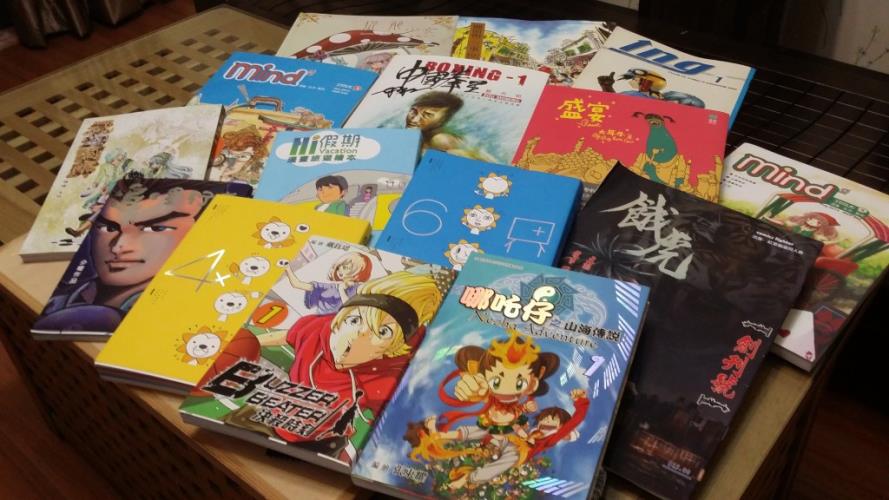An accountant by profession, Ashley is member of several anime and comics associations in Macao. She started writing fiction, illustrated and drew the comic strip of Macao Daily in the early 1990s. Later on she took the role of comics writer, and she is now the managing editor of MIND², a comics magazine published by Comic’s Kingdom. Ashley also participates in organising the Macao Animation, Comic and Toy Expo, an event run by Macao Animation & Comic Alliance.

When interviewed, a manga artist will always confess that his or her profession is derived from a love for manga at an early age.
The appeal of manga not only includes attractive visuals. A cohesive narrative is essential to spring together the various images and to engage the readers.
The development of Macao’s original manga works is hampered by the fact that most artists are doing it on an amateur basis. These artists compose their work based on self-sourced materials, and since they have very little time for composition, the output is not as perfect as desired. Notwithstanding, Macao’s manga works have improved over the years and benefited from processes of exploration and reflection. In recent years, the original works by local artists have shown signs of strong creativity, as compared with the more imitative style of manga in the earlier decade.
So how is Macao’s manga like?
In Macao, comic strips tend to draw on politics and community issues. However, works by comic strips artists who have relatively less life experience or knowledge may come across as less fascinating. Emerging artists like to do their drawings based on subjects from everyday life, since such materials are more manageable. In recent years, with the rise of bolder thinking and creativity, a new type of creative work has emerged, which is based on a play on graphic and visual impact, rather than a narrative plot.
Strangely enough, it is rather unusual to find short to medium-length manga love stories in Macao. For a long time, many of the artists in Macao prefer to compose fictional stories with surreal settings and plots. While it is possible that such settings or plots are used as tools of satire, many of them are simply writing whatever is on their minds. Even if some of the stories are based on real happenings, the plots are unrealistic. Nevertheless, manga is, after all, a work of fantasy to please the readers (and the artists), and so there is no harm in that. A few excellent manga artists, however, are able to come up with adaptations based on a variety of subjects, ranging from astronomy, geography, history, fables to electronics, even on religious matters.
In recent years, the Macao SAR government has a policy of supporting the arts, and so Macao’s heritage attractions are also brought into local manga books. After all, how can these attractions be left out when talking about Macao’s local characteristics? Honestly, the repeated use of these elements is already becoming cliché even in various local graphic design products. Certainly, the witty ones might highlight some aspects of the materials to engage with people, such as to make their contents more informative, or to make the plots more engaging, so as to enhance the sophistication of the work.
It has been said that Macao enjoys a history of over four centuries of cultural exchange between the East and the West. Understanding this, it is obvious that the subjects worth exploring in any work of art are not limited to transport problems, heritage sites or frivolous dating games. For example, one veteran artist has successfully captured local history and characteristics by telling the story of Buddha statues in Rua dos Ervanarios in his work. If one is willing, there are plenty of such stories to do with Macao’s streets and places that provide rich materials, although some efforts in research and retelling are inevitable.
There are also artists who aim to venture beyond Macao’s scene and explore their own directions. Recently, an artist has produced a documentary style manga story based on the life of a well-known Mainland Chinese boxing athlete. Being a boxing professional himself, the artist has firsthand experience in boxing, and the story is very well-written and touching.
In Macao, many manga artists are doing their illustrations for pleasure rather than see it as a job. As a result, they are also faced with less pressure in terms of deadlines and market taste, and so enjoy a greater sense of freedom. This should have given them more possibilities compared to those operating in other countries. At the same time, their works can be rather subjective. No doubt, such idiosyncratic works may help to encourage different styles to co-exist. However, on a more macro scale, better ways are needed to expand the depth and diversity of these artistic works.